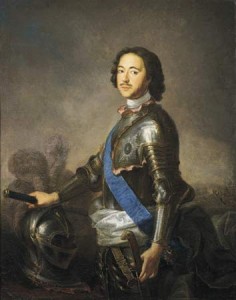When Russia grew in its empire, they also grew in the number of ethnicities within its empire. Since Russia grew in the number of ethnicities it had within its empire, Kappeler’s chapter on ethnicity in late tsarist Russia felt like a whirlwind. But, as much as a whirlwind as the chapter may have felt, one takeaway I did get was that a great number of nationalities, if not all nationalities, were treated relatively equally.
I believe this because of the high number of non-Russians who were in the upper echelon of Russian Empire society. Regardless of the russification that non-Russians may have gone through/did go through, it is still impossible to ignore the fact that, for example, “the Muslims of Aderbaidzhan (3 per cent) and the Germans (1.4 per cent) had a considerably higher proportion of hereditary nobles than the Russians.”[1] There is also the fact that the most literate groups were not Russians, but Estonians, Latvians, and Germans.[2] If the Russian goal was to thoroughly subordinate non-Russians, then the high number of literate and noble non-Russians demonstrate that they were either doing a poor job of that…or not doing the job at all.
But at the opposite end of the spectrum-peasants and how long the average person lived-Russians were still worse off than many other ethnic groups. With peasantry, our class has talked about how peasantry was abolished in certain ethnic areas of the empire, but not in Russia itself. Furthermore, Russian peasants faced poor conditions, even compared to many non-Russian counterparts.[3] Even more damning for anyone who argued that there was a “Russian master race” was the fact that Russians also had lower life expectancy (and therefore probably a lower quality of life) than those of many other ethnicities, including the Jews (who many would think would be particularly oppressed.[4]
Is it possible that there is evidence which shows oppression instead of equality? Probably, but the statistics presented by Kappeler gives me more of a rhetoric of ethnic equality than one of ethnic inequality.
Question:
How did the treatment of non-Russian ethnicities change over time in the Russian Empire? Is it a narrative of progress, or not?
[1] Andreas Kappeler, The Russian Empire: A Multiethnic History. Trans. Alfred Clayton. Pearson Education: 289.
[2] Ibid., 310.
[3] Ibid., 322.
[4] Ibid., 323.
Bibliography
Kappeler, Andreas. The Russian Empire: A Multiethnic History. Trans. Alfred Clayton. Pearson Education.

